Themed collection Reaction Chemistry & Engineering Emerging Investigators

Reaction Chemistry & Engineering Emerging Investigators 2019
Reaction Chemistry & Engineering Editorial Board Chair Klavs Jensen introduces the 2019 Emerging Investigators issue.

React. Chem. Eng., 2019,4, 164-164
https://doi.org/10.1039/C9RE90004G
Enabling tools for continuous-flow biphasic liquid–liquid reaction
This minireview offers an up-to-date overview of enabling tools for biphasic liquid–liquid reactions in flow.
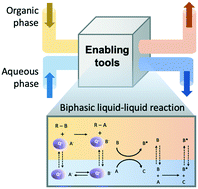
React. Chem. Eng., 2019,4, 235-243
https://doi.org/10.1039/C8RE00230D
Role of hexafluoroisopropanol in C–H activation
HFIP has developed immense importance in the C–H functionalization methodology. Both the reactivity and selectivity have been vastly improved using HFIP whose H-bonding to the substrate facilitates and accelerates C–H activation. This review summarizes the chronological development of the evolution of HFIP in C–H activation along with important mechanistic details.
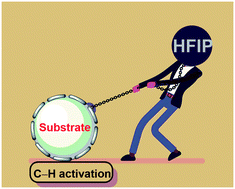
React. Chem. Eng., 2019,4, 244-253
https://doi.org/10.1039/C8RE00225H
Landscape and opportunities for active pharmaceutical ingredient manufacturing in developing African economies
This review will highlight the opportunities that exist in the localization of cutting-edge manufacturing technologies within an African context.

React. Chem. Eng., 2019,4, 457-489
https://doi.org/10.1039/C8RE00236C
Structure, characterization, and catalytic properties of open-metal sites in metal organic frameworks
This review provides an overview of the current understanding of structure–catalytic properties of open-metal sites in metal organic framework materials.
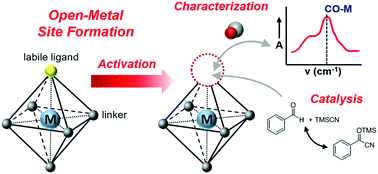
React. Chem. Eng., 2019,4, 207-222
https://doi.org/10.1039/C8RE00228B
Origins of complex solvent effects on chemical reactivity and computational tools to investigate them: a review
Origins of solvent-induced enhancement in catalytic reactivity and product selectivity are discussed with computational methods to study them.
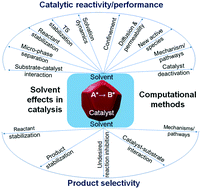
React. Chem. Eng., 2019,4, 165-206
https://doi.org/10.1039/C8RE00226F
From metal-supported oxides to well-defined metal site zeolites: the next generation of passive NOx adsorbers for low-temperature control of emissions from diesel engines
Passive NOx adsorbers as new components to complement SCR catalysts to control cold-start NOx emissions efficiently.
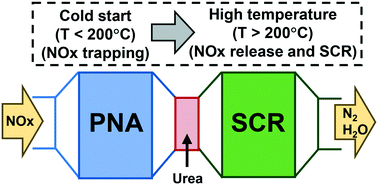
React. Chem. Eng., 2019,4, 223-234
https://doi.org/10.1039/C8RE00193F
Effect of metal chlorides on glucose mutarotation and possible implications on humin formation
An in situ Raman spectroscopic kinetic study of the glucose mutarotation reaction in the presence of Lewis acids is presented herein. The effect of Lewis acids on humin formation reactions is also discussed.

React. Chem. Eng., 2019,4, 273-277
https://doi.org/10.1039/C8RE00233A
Continuous synthesis of elastomeric macroporous microbeads
Macroporous microbeads are synthesized by microfluidic production of silica-loaded polymeric microdroplets followed by porogen removal via selective etching.
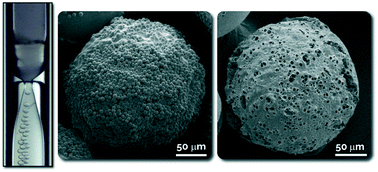
React. Chem. Eng., 2019,4, 254-260
https://doi.org/10.1039/C8RE00189H
Exploiting enhanced paramagnetic NMR relaxation for monitoring catalyst preparation using T1–T2 NMR correlation maps
A new method to characterise the evolution of surface sites during metal-supported catalyst preparation has been developed, which exploits NMR relaxation times and their sensitivity to paramagnetic ions.
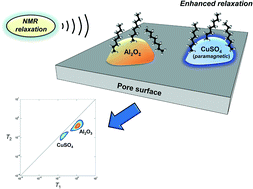
React. Chem. Eng., 2019,4, 268-272
https://doi.org/10.1039/C8RE00173A
Single-step catalytic conversion of furfural to 2-pentanol over bimetallic Co–Cu catalysts
Catalytic conversion of furfural to 2-pentanol over Co–Cu/Al2O3 catalysts.
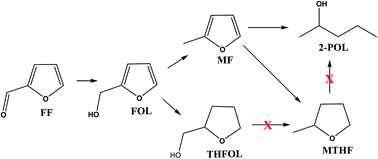
React. Chem. Eng., 2019,4, 261-267
https://doi.org/10.1039/C8RE00195B
Jet-mixing reactor for the production of monodisperse silver nanoparticles using a reduced amount of capping agent
The jet-mixing reactor can continuously produce monodisperse silver nanoparticles using limited amounts of capping agent.

React. Chem. Eng., 2019,4, 1779-1789
https://doi.org/10.1039/C9RE00152B
RAFT copolymerization of oppositely charged monomers and its use to tailor the composition of nonfouling polyampholytes with an UCST behaviour
The RAFT copolymerization of oppositely-charged monomers is studied to optimize the composition of polyampholytes with an UCST behaviour and nonfouling properties.
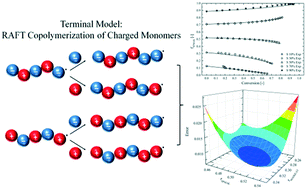
React. Chem. Eng., 2019,4, 436-446
https://doi.org/10.1039/C8RE00221E
Structured ZSM-5 coated SiC foam catalysts for process intensification in catalytic cracking of n-hexane
Structured zeolite/SiC foam catalysts provide alternative solutions to mass and heat transfer limited chemical transformations for process intensification, exemplified by cracking reactions.

React. Chem. Eng., 2019,4, 427-435
https://doi.org/10.1039/C8RE00215K
A topological model for predicting adsorption energies of polycyclic aromatic hydrocarbons on late-transition metal surfaces
A topological model for the adsorption of PAHs is derived based on an analogy with the formation enthalpies of metal complexes.
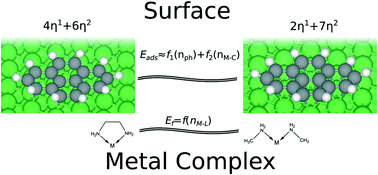
React. Chem. Eng., 2019,4, 410-417
https://doi.org/10.1039/C8RE00229K
Kinetics-assisted discrimination of active sites in Ru catalyzed hydrolytic dehydrogenation of ammonia borane
The kinetics-assisted method is simple yet effective in discriminating Ru edge atoms as the dominant active sites for the reaction.
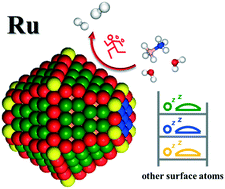
React. Chem. Eng., 2019,4, 316-322
https://doi.org/10.1039/C8RE00223A
Development of customized 3D printed stainless steel reactors with inline oxygen sensors for aerobic oxidation of Grignard reagents in continuous flow
Development of 3D printed stainless steel reactors for the oxidation of Grignard reagents in continuous flow.
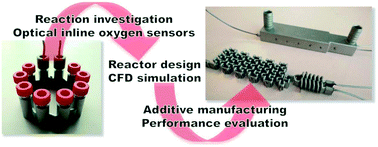
React. Chem. Eng., 2019,4, 393-401
https://doi.org/10.1039/C8RE00278A
Insights into the roles of water on the aqueous phase reforming of glycerol
Microkinetic modeling using energies from DFT and scaling relations to reveal roles of water in aqueous phase reforming of glycerol.
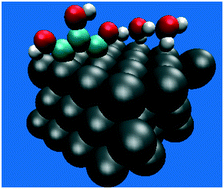
React. Chem. Eng., 2019,4, 383-392
https://doi.org/10.1039/C8RE00267C
NO reduction with CO over HY zeolite-supported rhodium dicarbonyl complexes: giving insight into the structure sensitivity
Mononuclear zeolite-anchored Rh(CO)2 complexes do not facilitate NO reduction with CO and groups of rhodium atoms are required to initiate and sustain NO/CO catalytic transformations.

React. Chem. Eng., 2019,4, 418-426
https://doi.org/10.1039/C8RE00222C
Unraveling the interactions in fast co-pyrolysis of microalgae model compounds via pyrolysis-GC/MS and pyrolysis-FTIR techniques
The pyrolysate composition, product time evolution and kinetics of fast co-pyrolysis of protein, carbohydrate and lipid surrogates are investigated to unravel the interactions among microalgae components.
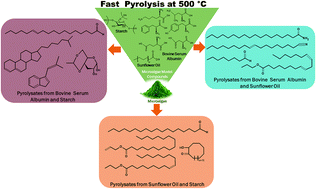
React. Chem. Eng., 2019,4, 278-297
https://doi.org/10.1039/C8RE00227D
Mechanism of oligosaccharide synthesis via a mutant GH29 fucosidase
First unbiased transition path sampling study of a glycosynthase enzyme reveals single-step mechanism with oxocarbenium-like transition state.
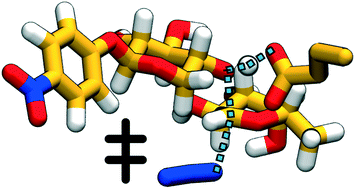
React. Chem. Eng., 2019,4, 402-409
https://doi.org/10.1039/C8RE00240A
Immobilized tetrakis(triphenylphosphine)palladium(0) for Suzuki–Miyaura coupling reactions under flow conditions
An immobilized triphenylphosphine scaffold was prepared by precipitation polymerization and functionalized to afford a cost-effective source of solid-supported tetrakis(triphenylphosphine)palladium(0).

React. Chem. Eng., 2019,4, 372-382
https://doi.org/10.1039/C8RE00235E
Integrating reactive distillation with continuous flow processing
A continuous flow platform has been developed that integrates reactive distillation with modern flow reactor technology.
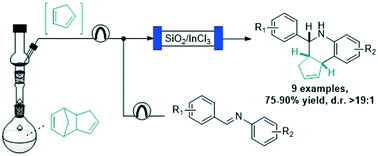
React. Chem. Eng., 2019,4, 368-371
https://doi.org/10.1039/C8RE00217G
Revealing quantum mechanical effects in enzyme catalysis with large-scale electronic structure simulation
Large scale quantum mechanical simulation systematically reveals length scales over which electronically driven interactions occur at enzyme active sites.
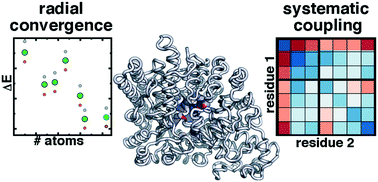
React. Chem. Eng., 2019,4, 298-315
https://doi.org/10.1039/C8RE00213D
Decomposition kinetics for HONO and HNO2
This work presents a detailed investigation into the isomerization and decomposition of HONO and HNO2.
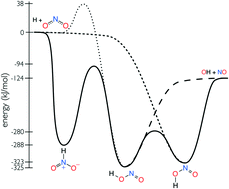
React. Chem. Eng., 2019,4, 323-333
https://doi.org/10.1039/C8RE00201K
Continuous amination of aryl/heteroaryl halides using aqueous ammonia in a Teflon AF-2400 tube-in-tube micro-flow reactor
Aqueous ammonia was applied as the ammonia source in the continuous amination of aromatic and heteroaromatic halides assisted by a Teflon AF-2400 tube-in-tube reactor to generate densely substituted aryl/heteroaryl amines in high yields.

React. Chem. Eng., 2019,4, 346-350
https://doi.org/10.1039/C8RE00216A
Continuous flow processing as a tool for the generation of terpene-derived monomer libraries
A Diels–Alder reaction employing terpenes for rapid synthesis of monomer libraries under flow conditions is presented.
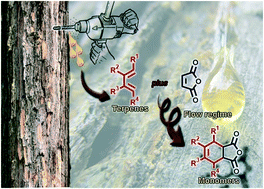
React. Chem. Eng., 2019,4, 362-367
https://doi.org/10.1039/C8RE00237A
Numbering-up of capillary microreactors for homogeneous processes and its application in free radical polymerization
Different numbered-up capillary microreactor systems were assembled with commercially available parts for homogeneous processes with significant variation of fluid properties (e.g., free radical polymerization), and statistical analysis was performed to reveal its flow distribution performance.
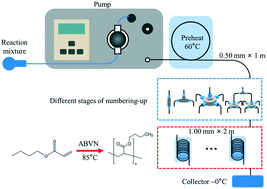
React. Chem. Eng., 2019,4, 351-361
https://doi.org/10.1039/C8RE00224J
Scale-up of N-alkylation reaction using phase-transfer catalysis with integrated separation in flow
Scaling-up phase-transfer catalysis in flow.
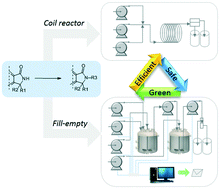
React. Chem. Eng., 2019,4, 334-345
https://doi.org/10.1039/C8RE00203G
About this collection
From RCE
This collection features work that showcases reaction engineering approaches from leading scientists in the earlier stages of their independent research careers. The 2019 Reaction Chemistry & Engineering Emerging Investigators were individually nominated, by members of the journal Editorial and Advisory Boards and previous Emerging Investigators, in recognition of their potential to influence future directions in the field.
Accompanying this collection is the Emerging Investigators special issue, in which these articles will be formally published. This issue is scheduled for early 2019.